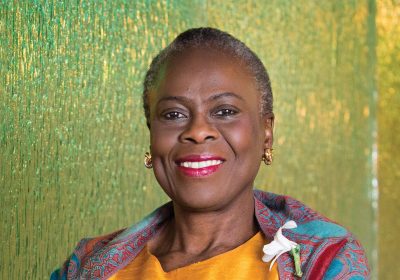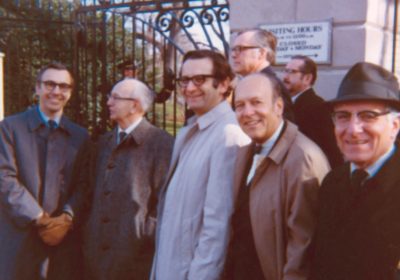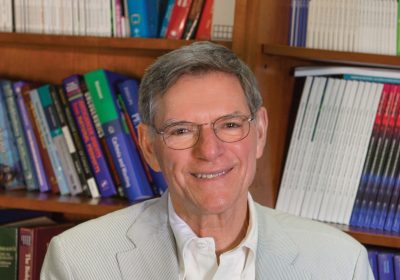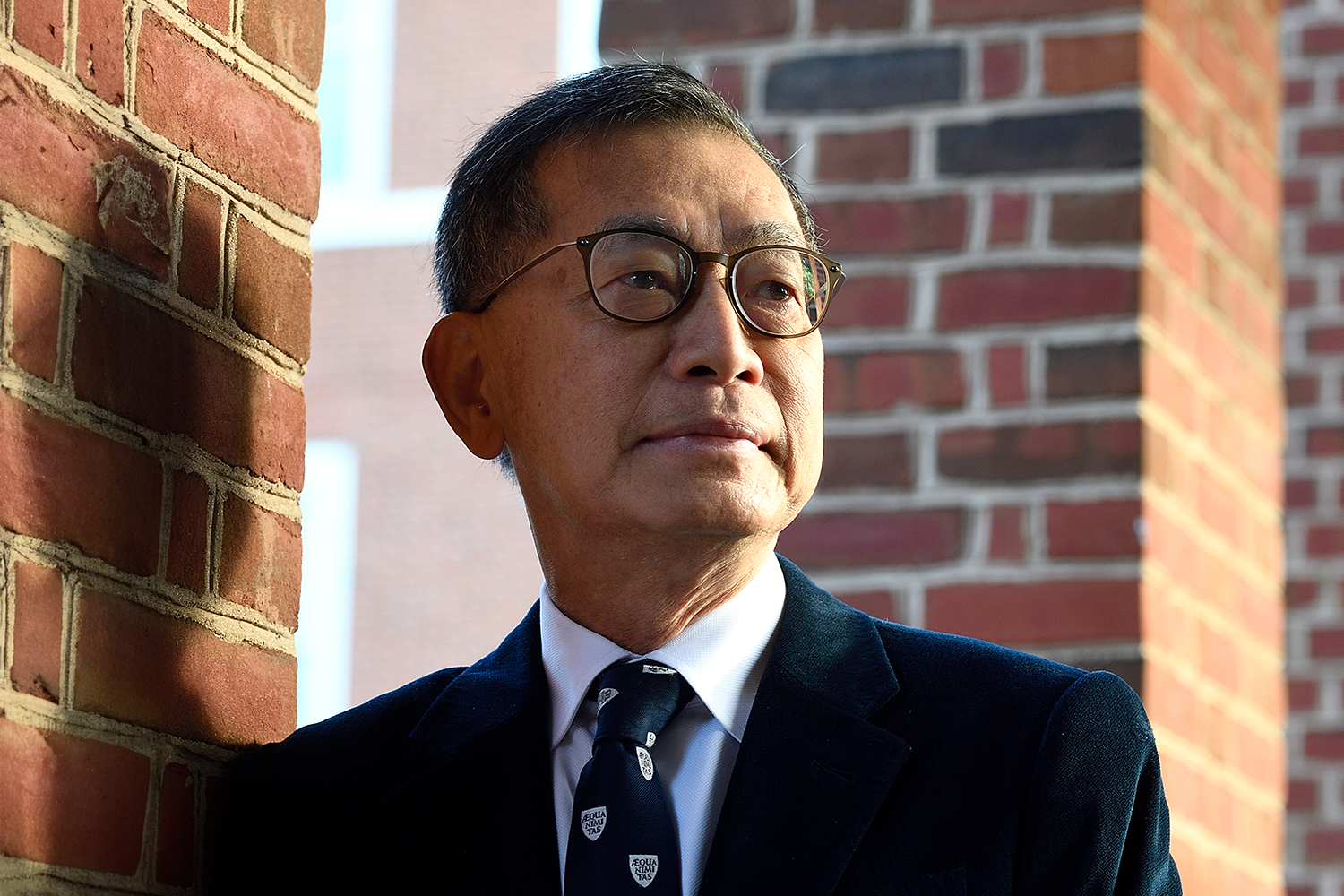
Dr. Chi Van Dang: Understanding the MYC Oncogene to Benefit Patients
Dr. Dang was among the first to discover that MYC oncogenes regulate tumor metabolism and to establish MYC’s role in regulating the circadian rhythm and the immune system.

Chi Van Dang, MD, PhD, was born in Saigon, then the capital of South Vietnam and now called Ho Chi Minh City in a united Vietnam. He was “a middle sibling,” as he describes it, in a family of 10 children. His father was a neurosurgeon, professor and dean of the medical school in Saigon who emphasized curiosity and education. “When I would visit my father, at age 9 or so, the staff would scrub me up, and I could go into the operating room and see him work as a surgeon. That really sparked my interest in science,” Dr. Dang recalled.
His mother also had a big job—taking care of 10 children. “She is probably the most humanistic mother that I know,” he said. “She taught us all of the right things to do and imparted to us how to be in the world and treat others.”
As the Vietnam War raged in the mid-1960s, a visiting American surgeon who befriended Dr. Dang’s father offered to bring a few of his children to the U.S. In 1967, the family chose to send Chi, then 12 years old, and his older brother Chuc—both of whom had attended an English-speaking school in Saigon. The brothers lived in Flint, Michigan, with the surgeons and their families, acclimating to American culture and doing well in school. Two other siblings also made their way to the U.S. In early April 1975, as Saigon fell to North Vietnamese troops, the rest of the family evacuated and came to the U.S. as refugees. “My father came to the U.S., to California, as a 56-year-old. I learned from him a sense of pride and a strong work ethic,” said Dr. Dang. “He had gardening jobs when he first arrived to earn a salary and then started all over, completing a three-year residency to become a licensed clinician and began to practice medicine in this country.”
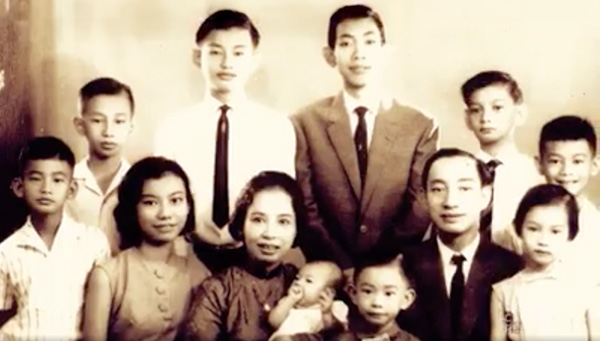
In 1969, the young Dang, along with his brother Chuc, moved to Washington, D.C., where the Dang family had cousins, to attend high school. Dang continued to show interest in science, working during the summers at two research laboratories with stipend support from the American Heart Association and the American Cancer Society. He started college at the University of Michigan in Ann Arbor in 1972, and three years later, he graduated with a bachelor’s degree in chemistry, having completed an honors thesis in organic chemistry. Just as South Vietnam fell in 1975, Dang was applying to medical schools and, as a backup, to graduate schools in chemistry. As a South Vietnamese citizen in the U.S. on a student visa, he was unsure of his legal status. In fact, several medical schools placed him on their waitlists, not because his credentials were lacking, but because the schools were not sure whether he would be able to stay in the U.S. But he was accepted into and entered the chemistry PhD program at Georgetown University in Washington, D.C., and graduated after just three years in 1978. His drive to attend medical school hadn’t diminished, however, and he applied to the Johns Hopkins University School of Medicine in Baltimore and was accepted. By then, he had received U.S. permanent residency status.
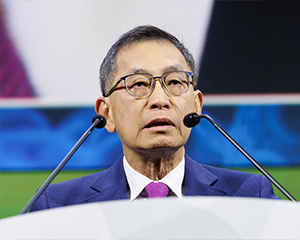
Today, Dr. Dang is the Bloomberg Distinguished Professor of Cancer Medicine at Johns Hopkins and the scientific director and CEO of the Ludwig Institute for Cancer Research. His laboratory studies how cancer perturbs cellular metabolism, as well as the immune response and natural circadian rhythms, always with the goal of bringing better cancer therapies to patients.
At the American Association for Cancer Research® (AACR) Annual Meeting 2024, held April 5 to 10 in San Diego, Dr. Dang received the 2024 AACR-Margaret Foti Award for Leadership and Extraordinary Achievements in Cancer Research. He was recognized for his seminal contributions to elucidating the function of the MYC oncogene in regulating anabolic metabolism necessary for cell growth and proliferation and for his leadership and commitment to mentorship that have fostered the careers of countless early-stage investigators in the cancer biology and metabolism fields.
He has been able to balance major leadership and service roles with his enduring passion for cancer research.”
Eric Fearon, MD, PhD
Postdoctoral researcher with Dr. Dang in the 1990s
Drawn to Oncogenes
Dr. Dang went to Johns Hopkins as a medical student in 1978. There, he had clinical training and also conducted research, engrossed in cellular biology and hematology research. He even published several biochemistry papers. Dr. Dang stayed on as an internal medicine intern and resident from 1982 to 1985. Oncogenes, which are genes that cause cancer when mutated, had just been discovered at the University of California, San Francisco (UCSF) by J. Michael Bishop, MD, and Harold Varmus, MD, who would go on to share the 1989 Nobel Prize in Physiology or Medicine.
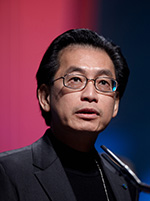
“I became very interested in cancer research because of its complexity,” Dr. Dang recalled. He applied for a fellowship at UCSF, and at a meeting, he told Dr. Varmus he would like to work on oncogenes. “‘Which one?’ I remember Dr. Varmus asking me. I didn’t know one from another!” Dr. Dang laughed. When he arrived at UCSF for the hematology-oncology and molecular oncology fellowship, he worked with Dr. Bishop and Dr. Varmus and closely with physician-scientist William M. Lee, MD, PhD, who was working on the MYC oncogene. Not much was known about MYC beyond its ability to turn noncancerous cells into cancerous ones. Dr. Dang worked as a medical oncologist and also in the lab, which was his first exposure to molecular biology. During his postdoctoral fellowship, Dr. Dang’s first paper on MYC, published in 1988, identified the portion of the MYC protein that causes it to enter the nucleus. Called the nuclear localization signal, this protein sequence is found on all proteins that function in the nucleus, where the cell’s DNA is housed. This led Dr. Dang to query whether MYC binds to DNA in the nucleus and impacts DNA processes.
In 1987, Dr. Dang moved back to Johns Hopkins as a physician-scientist. At first, he focused on starting his own hematology-oncology lab, where he continued to investigate the role of MYC in DNA processes; then, he took on clinical patient duties once a week. Newly arrived at Johns Hopkins, he received a call from molecular biologist Steven McKnight, PhD, now at UT Southwestern Medical Center in Dallas but then at the Carnegie Institution for Science in Baltimore. Dr. McKnight’s lab was studying proteins that directly bind to DNA and increase or decrease the expression of genes. Dr. McKnight and other researchers were just beginning to elucidate the specific protein portions that bind to DNA.
Dr. McKnight’s graduate student, William H. Landschulz, MD, PhD, shared with Dr. Dang that he had discovered a novel protein segment containing four consecutive leucines, one of the amino acids that make up proteins. Dr. McKnight’s lab dubbed the protein segment a “leucine zipper” and showed that it binds directly to DNA. It turned out that the MYC protein also contained a leucine zipper, further suggesting that MYC binds directly to DNA. Dr. Dang began to investigate the function of MYC’s leucine zipper, hypothesizing that the leucine zipper of one MYC protein could bind to the leucine zipper of another MYC protein or an unknown partner protein. Dr. Dang’s lab found that when MYC is mutated in a region that makes it dysfunction but retains the leucine zipper, the mutated MYC inhibits the activity of normal MYC. These findings were published in Nature in 1989. “This was a big break for me as a junior faculty and launched all of my subsequent grant funding,” said Dr. Dang.
Connecting Metabolism to Cancer
After providing the first evidence that MYC is indeed a transcription factor—a protein that binds to DNA and modifies gene expression—Dr. Dang’s lab probed which genes MYC turns on and off. Postdoctoral researcher Hyunsuk Shim, PhD, and graduate student Brian Lewis, working in Dr. Dang’s lab, identified 20 candidate genes that were likely to be controlled by MYC, including lactate dehydrogenase A (LDHA), a metabolic enzyme. Dr. Dang became interested in studying MYC’s connection to LDHA, a seemingly boring gene that does routine, so-called housekeeping duties within the cell. Using noncancerous rat fibroblast cells, the team in 1997 showed that LDHA overexpression is required to transform these cells into tumor cells. “That was a turning point,” Dr. Dang said. It was the first time an oncogene was shown to directly turn on genes involved in sugar metabolism, and it revealed the high sugar needs of cancer cells.
The new discovery consumed the Dang lab for the next two decades as he and his students studied how MYC controls metabolism by modulating metabolic enzymes and energetic processes within the mitochondria in cells.
The Importance of the Circadian Clock
While his research career continued to blossom, Dr. Dang also became the director of the hematology division at Johns Hopkins and then the vice dean for research—seeing the additional roles as new challenges and ways to give back to the institution. Then, in 2010, just when one of his older brothers had been diagnosed with cancer, the University of Pennsylvania in Philadelphia offered him the directorship of the Abramson Cancer Center. “I thought I would be a lifer at Hopkins, and I didn’t think I would go,” said Dr. Dang. But with his brother’s illness, he thought this was an opportunity to make a difference on a larger scale.
At Abramson Cancer Center, starting in 2011, Dr. Dang oversaw the building of facilities to manufacture and test chimeric antigen receptor (CAR) T-cell therapy, which Carl June, MD, and his colleagues were showing could treat blood cancer patients, including children, who had few other options. He also launched several “Translational Centers of Excellence” that bring together teams of physicians conducting clinical trials and laboratory researchers to address problems that “cannot be addressed otherwise,” he said. “This paradigm has now been adopted by other institutions and with other disciplines, and I believe I added value to the system of how we make progress for patients.”
The move to Abramson also launched an entire new branch of research for Dr. Dang’s lab. Inspired by colleagues there who are among the leading circadian biology researchers, his lab began to explore how the circadian clock system fits into cancer biology. They noticed that MYC and the master transcription factor regulator of the circadian clock both bind to an identical DNA sequence. In 2015, Brian J. Altman, PhD, and Annie Hsieh, MD, PhD, showed that MYC disrupts the circadian clock and metabolism in cancer cells, ushering in another new concept to cancer biology. Dr. Dang’s lab continues to study how cancers disrupt the circadian clock and what role that plays in the formation of tumors and evasion of the immune system.
Seeing another opportunity, in 2017, Dr. Dang became the scientific director of the Ludwig Institute for Cancer Research, where he makes decisions on directing funds for cancer research projects. While continuing in this role at the Ludwig Institute, Dr. Dang came back to Johns Hopkins in 2022 and continues to study MYC, cancer metabolism, and, more recently, how a tumor’s disruption of the circadian clock can affect the immune system.
A Conscientious Mentor
Dr. Dang takes seriously his role as a mentor to younger cancer scientists. With respect to his mentees, his motto is, “Be generous with your time! They are the next generation.” His mentees agree he truly lives by that maxim.
For Dr. Shim, a postdoctoral fellow in Dr. Dang’s lab between 1995 and 1998 and now a professor of radiation oncology at Emory University School of Medicine in Atlanta, “Dr. Dang is one of our top scientists. Yet, he is amazingly generous with everyone. He made sincere efforts to help other people’s research regardless of credits. He is the smartest person I know.”
While working in Dr. Dang’s lab at Johns Hopkins, Dr. Shim recalled her mentor as “one of the most popular mentors at Johns Hopkins at that time, with many graduate students, postdocs, staff, and clinicians in our lab.”
“He directly worked with everyone on a daily basis. There were many Hopkins faculty who stopped by his office to consult him on their own research. Dr. Dang was very generous with his time and always provided brilliant ideas for them to pursue. He was famous at Hopkins as a brilliant mind,” she recalled.
Eric Fearon, MD, PhD, a postdoctoral researcher with Dr. Dang in the 1990s, also has high praise for his former mentor. Dr. Fearon is now a professor of oncology and the director of the University of Michigan Rogel Cancer Center in Ann Arbor. “Dr. Dang is an exceptional researcher, mentor, and leader in the cancer research field,” he said. “He is an inspiring figure in the cancer field. Over the nearly 35 years in his role as a principal investigator, he has demonstrated remarkable focus and impact in his studies of the biology of MYC function—a key oncogene implicated in the genesis of a large and diverse collection of cancers.
“He has also been able to balance major leadership and service roles with his enduring passion for cancer research,” Dr. Fearon added. “It is terrific to see this well-deserved recognition for his leadership and scientific contributions.”
Former graduate student Brian Lewis, PhD, now a professor of molecular, cell, and cancer biology at the UMass Chan Medical School in Worcester, Massachusetts, said Dr. Dang has a “combination of scientific intelligence and instinct, coupled with outstanding leadership and administrative vision and skill, all wrapped in humility.” Dr. Dang was and remains a mentor for Dr. Lewis. “I watched him support the research careers of countless junior faculty, both within his division and outside. In these efforts, he always placed the mentee in front, deemphasizing his role in guiding and supporting their work. I have tried to mimic that in my own career, by emphasizing the roles of my trainees and collaborators in any successes that we have had,” he said.
A Dedication to Cancer Research
Dr. Dang has been a member of the American Association for Cancer Research® (AACR) since 1996 and was elected as a Fellow of the AACR Academy in 2018. Throughout his time as an AACR member, Dr. Dang has been a valued volunteer and leader on numerous AACR committees and association groups, serving as a member of the AACR Education and Training Committee (2019-present); a member of the AACR Special Conferences Committee (2020-2023); and vice chair of the AACR Annual Meeting Program Committee (2019-2020).
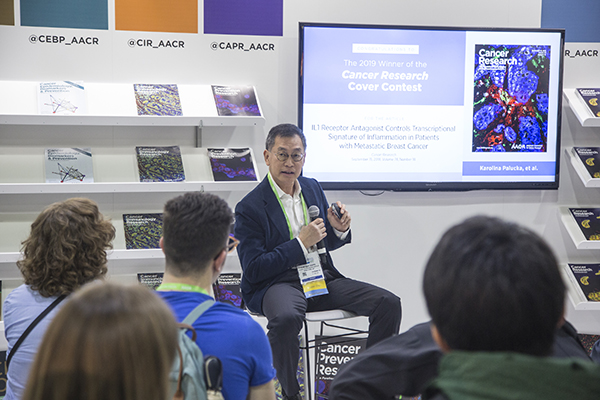
Dr. Dang has also contributed to the AACR’s publications program by serving as editor-in-chief of Cancer Research from 2018 to 2023 and as scientific editor of Cancer Discovery from 2010 to 2014.
He has been honored with many awards throughout his distinguished career, including the Karolinska Institute and George and Eva Klein Foundation Lecture and Medal and the Johns Hopkins University Distinguished Alumnus Award for Scientific Achievement. Dr. Dang has also been elected to numerous national societies, including the American Academy of Arts and Sciences and the Institute of Medicine of the National Academy of Sciences. He served as chair of the National Cancer Institute’s Board of Scientific Advisors and as a member of the U.S. Cancer Moonshot Blue Ribbon Panel.



